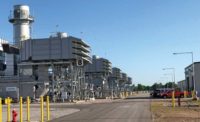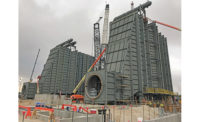National Western Center District Energy
Denver
BEST PROJECT
Submitted By: Saunders Construction
Owners: CenTrio Energy; National Western Center Authority
Lead Design Firm | Structural & MEP Engineer: AECOM
General Contractor: Saunders Construction
Civil Engineer: HCL Engineering & Surveying
A 72-in.-dia sewer pipe called the Delgany Interceptor forms the backbone of the nation’s largest wastewater heat recovery (WHR) system, providing the National Western Center’s seven-building campus with 90% of its heating and cooling needs.
Along with serving as a model for utilizing infrastructure to provide an efficient, reliable and resilient source of heating and cooling, the WHR system will eliminate 2,600 metric tons of carbon dioxide each year and conserve more than 3.1 million gallons of water.
system includes a 25-ft-deep wet-well connection to the interceptor at a nearby utility hole. An 8,790-sq-ft central utility plant containing solids-separation equipment and plate and frame heat exchangers transfers heat from the wastewater pipe to a clean-water ambient distribution pipe that, in turn, distributes warm water to campus buildings equipped with heat-recovery chillers and compatible HVAC systems.
On extremely hot or cold days, the WHR system is supplemented by high-efficiency natural gas boilers and chillers, ensuring reliability and competitive cost.

Photo courtesy Saunders Construction
The project team’s innovation was put to the test via several unexpected challenges. With design of the wet well only 60% complete, the owner advanced the schedule for diverting interceptor flows. The team created a separate wet-well bid package, accelerated its design and released equipment purchases early. As a result, the wet-well work was completed in just three months.
That work included addressing another surprise—inaccurate civil as-builts that necessitated additional structural concrete work for the well. Three separate concrete pours were performed to meet the structural tolerances for supporting flows of 30,000 gallons per day, thus averting a potential weeks-long delay.
Offsite prefabrication helped speed the delivery of 30-in.-dia carbon steel piping, ductwork and equipment.
To reduce installation time, the 5,000-lb pumps were fabricated on skids containing the pump, pipe, fittings and accessories. Five skids, the largest weighing 30,000 lb, were transported to the utility plant, where the final connections were completed.




